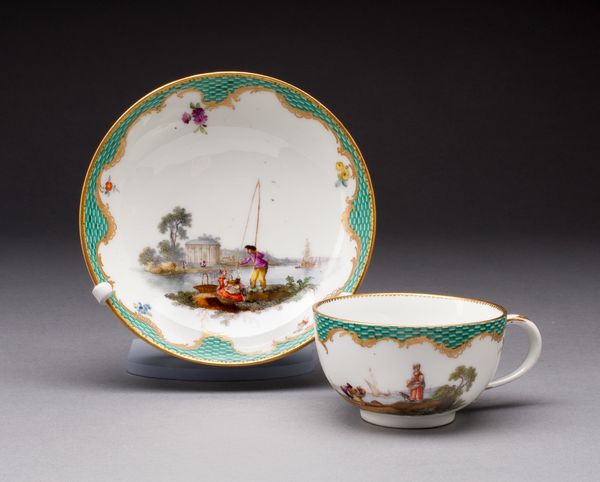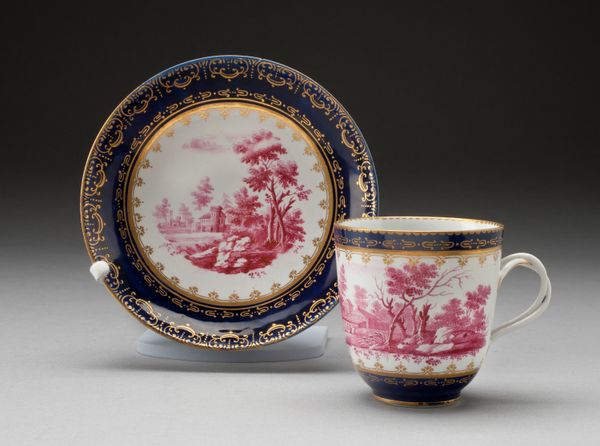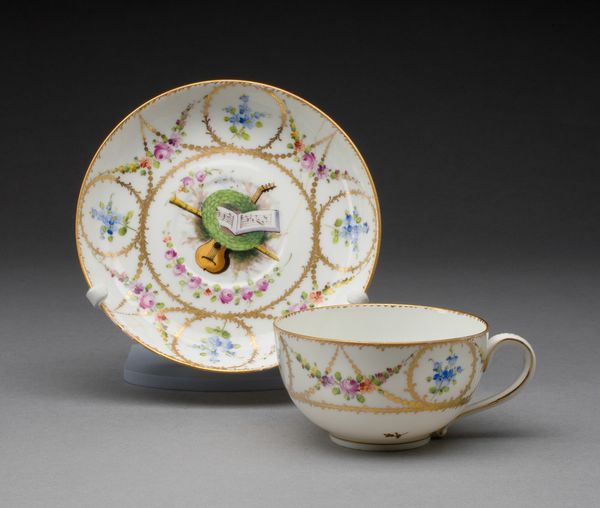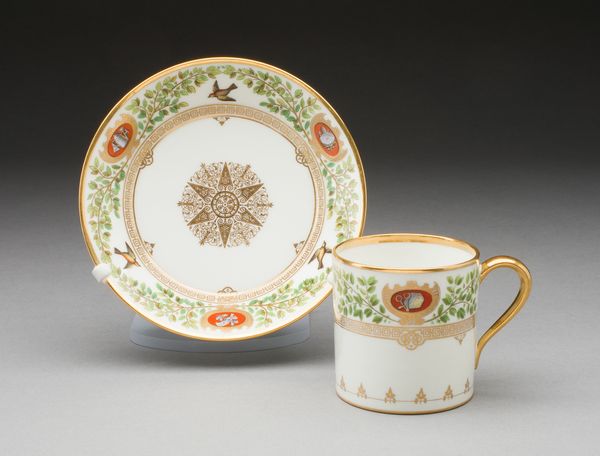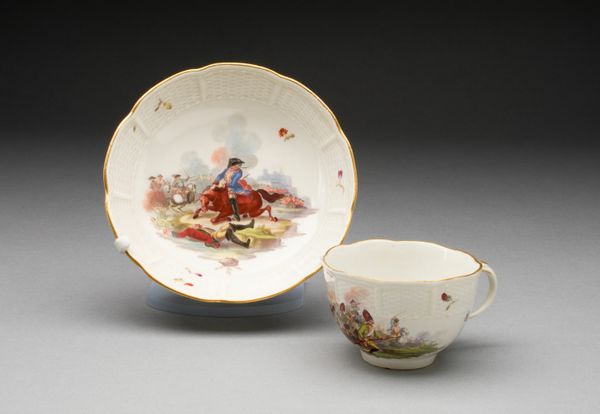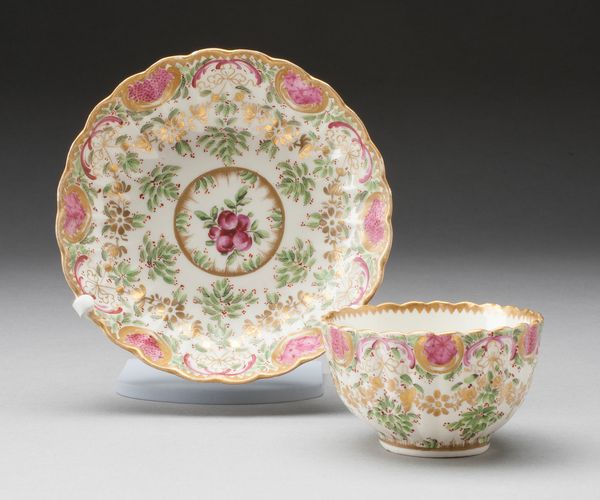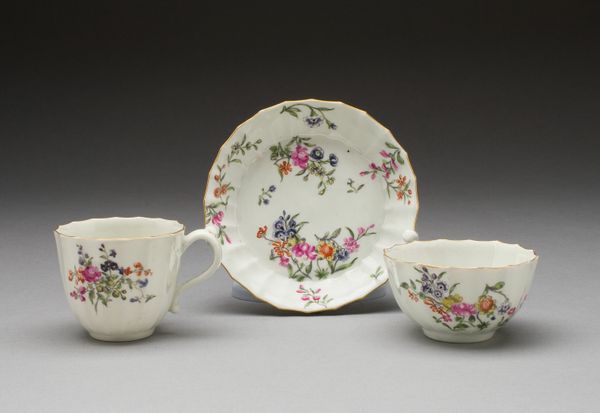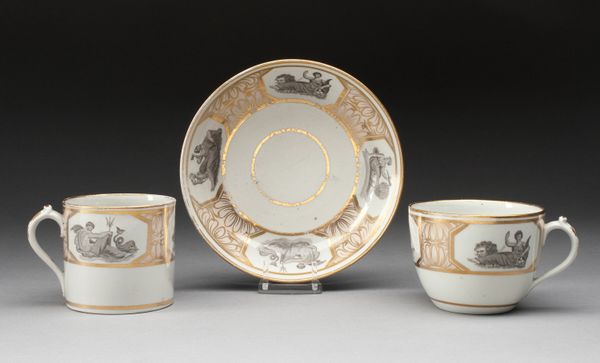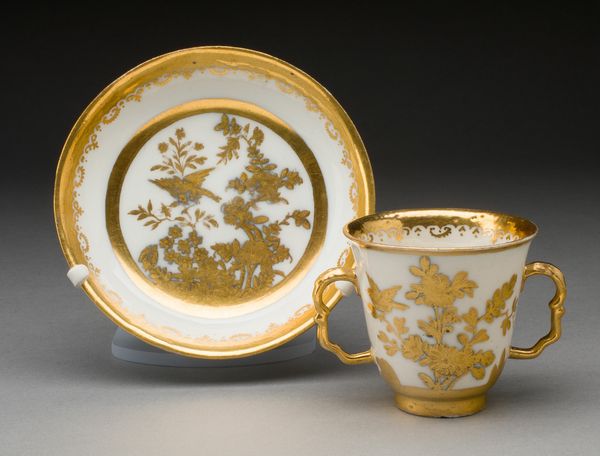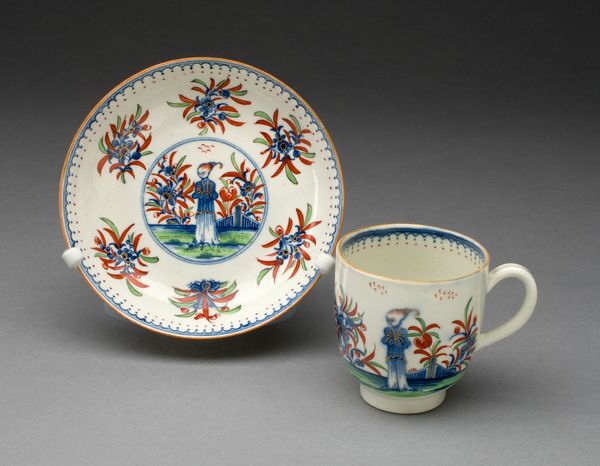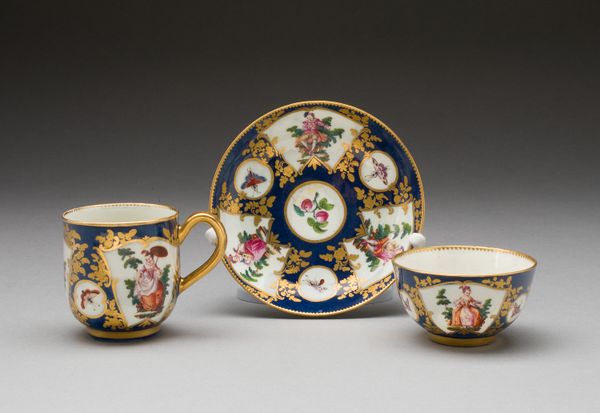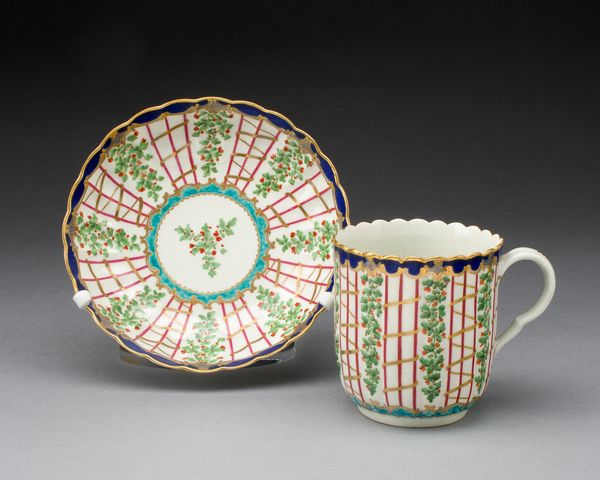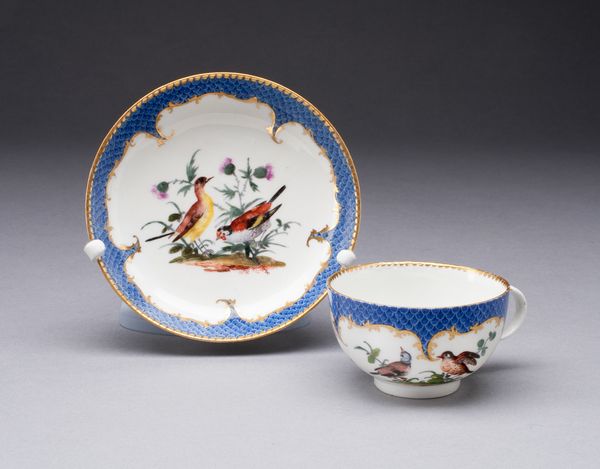
Dimensions: Cup: 6.3 × 6.7 cm (2 1/2 × 2 5/8 in.)
Copyright: Public Domain
Curator: Here we have an exquisite “Cup and Saucer” crafted between 1780 and 1795 by the Derby Porcelain Manufactory, now residing here at The Art Institute of Chicago. Editor: It's rather delicate, isn't it? A study in curves and light, almost ethereal. The porcelain itself seems impossibly thin, adorned with these whimsical landscape paintings. Curator: Precisely! It’s more than just decoration. Consider the context: These objects would have graced the tables of the British elite, representing wealth but also an engagement with the picturesque aesthetic. Imagine the Empire's expansion, projected on delicate objects. Editor: The painting, though miniature, mimics those landscape paintings. Look at the symmetry, that tiny bridge reflected in the still water. It's a carefully constructed image, designed to evoke a sense of harmony. Even the application of pink gives the whole an optimistic glow. Curator: This is where the power dynamics become apparent. Rococo’s visual language often acted as a mask. While seemingly pastoral and innocent, such artworks conveniently obscured the often brutal realities of colonialism and wealth extraction upon which their creation depended. Editor: Interesting! I see that decorative flourish more in terms of surface and depth. Consider how the gilt lattice interacts with the white porcelain—creating an almost vibrating effect that emphasizes the cup’s form. This piece employs space and ornamentation as active visual components. Curator: Exactly! That lattice is suggestive. Are these objects like vessels, or even prisons for larger ideals? This duality offers space for critical contemplation, urging reflection upon the socio-economic underpinnings influencing Rococo artistry. Editor: Perhaps. Still, let's acknowledge its pure artistic construction, this conscious arrangement of form, colour, and line; the Rococo style achieving that elegant look. There's a sophisticated conversation occurring here strictly from a formal standpoint. Curator: Yes, it provides space to contemplate material culture critically. This isn’t merely a beautiful object, but also a repository for societal values and inequalities. Editor: Seeing it that way truly opens another window. Appreciating its aesthetic properties gives us one layer, but then we unpack its context—a completely other depth of perception emerges. Curator: Agreed, now we might begin unpacking larger systems operating from that period! Editor: A final pause just appreciating its elegant line feels like an appropriate conclusion.
Comments
No comments
Be the first to comment and join the conversation on the ultimate creative platform.
